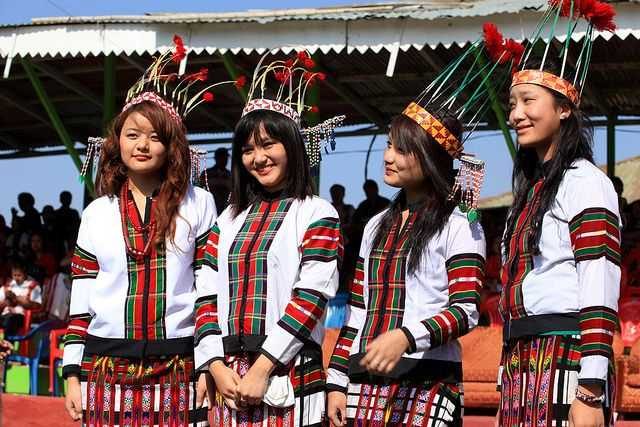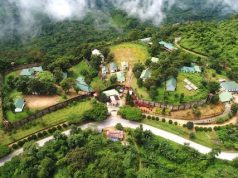Mizoram is one of the most beautiful and tourist-friendly states of our country which is a part of the Seven Sisters or India’s Northeastern states. The native people, called Mizo have their roots in the Southeast Asian countries and Christianity is the dominant religion of the state with about 87% of the population identifying as Christian.
Mizoram boasts of traditional lifestyle, music, unique dance forms like Cheraw, Khuallam, Chheihlam, and Chai and vibrant festivals. Mizo cuisine is mainly the non-vegetarian comprising chicken, beef, and pork meat while traditionally prepared rice beer is served to visitors during festivals.
Even though the best time to visit Mizoram is during the winter, from mid-November to February, the state’s major festivals take place between August and April as most of them celebrate harvest! Mizoram’s tribal festivals are a major attraction for domestic tourists as well as foreigners. Christmas celebration in Mizoram is an experience you would not like to miss!
Here is a look into the major festivals of Mizoram
Chapchar Kut
Celebrated at the onset of spring, normally during the first week of March, Chapchar Kut is a major festival of Mizoram. The colourful harvest festival celebrates the clearing of the forests for jhum cultivation. This festival is marked by folk dance and traditional music where people of every age take part. Men and women dress up in bright costumes and attractive head gears to perform folk dances and sing several traditional songs which is accompanied by beats of drums and cymbals.
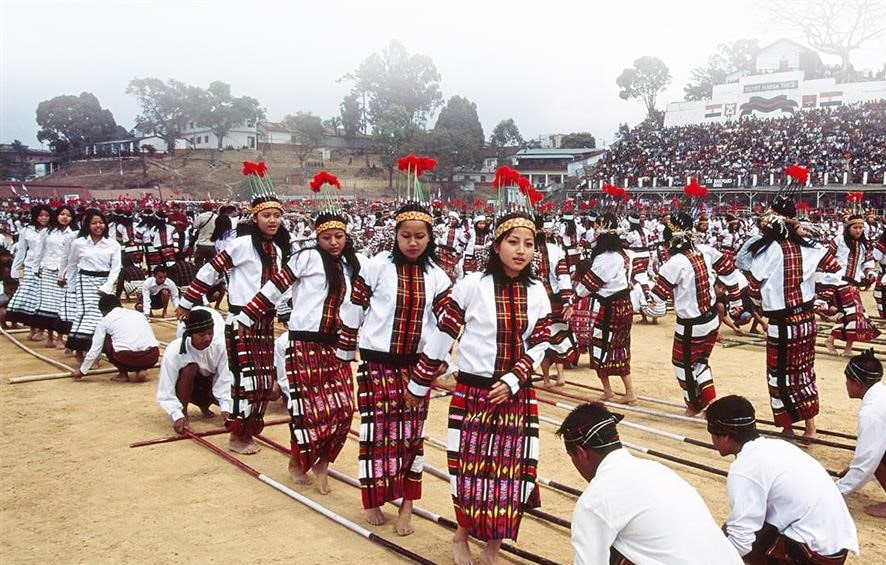
Visitors can witness Mizo people in colorful traditional attires and makeup performing Cheraw dance and Chai dance at the Chapchar Kut festival. Mizo women dance skillfully over bamboo sticks tapping on the ground and rhythmically raise their legs in-between the sticks.
Mim Kut
This is another harvest festival of Mizoram, where departed souls are also remembered. The maize crops which are sowed during the Chapchar Kut festival is harvested in Mim Kut festival time. This festival is marked by cultural dance and art forms. The Mizo people take the first produce and keep them for the departed souls at their homes as an offering. They also offer things like favourite clothes and ornaments to the departed. This is like a colorful ritual celebrated in every Mizo home.
Cuisines preferred by the departed souls are cooked at home and offered. The locals prepare rice beer in a traditional method and consume together. The Mizo people wear their traditional costumes, sing, and dance to traditional Mizo tunes as an attempt to entertain the departed souls. This cultural festival is celebrated between July and August.
Pawl Kut
Pawl Kut is celebrated once all the harvests are over, usually in December or January every year. This harvest and cultural festival dates back to the 18th century and usually lasts for two days. As per a myth related to this festival, during the 18th century, the region witnessed severe drought conditions. After the locals praying to the rain God, the region experienced heavy downpour leading to harvest of corps during the December. Hence, the first produce is offered to the rain god along with food and other offerings. Since then, the December harvest time is celebrated as Pawl Kut festival.

Two days before the start of this festival, the locals go for hunting birds and animals. The meat and eggs are consumed during this festival. The cuisine dominated by eggs along with beef, pork, and chicken is served to tourists and also offered to the rain god. Just like other tribal festivals, Pawl Kut too is marked by dance, music, and traditional colourful costumes.
Anthurium
The three-day-long Anthurium Festival celebrates farmers, flowers and horticulture in Mizoram. This vibrant and fragrant festival attracts tourists from across the nation and wide world. Mizoram’s Chief Minister also is present as Chief Guest, every year on this occasion.
Anthurium is one of the most expensive flowers cultivated in India. Anthurium sell for around Rs 8,00 to 1,000 per plant in metropolitan cities. In Mizoram, Anthurium varieties are widely used in ceremonies ranging from birthdays, weddings and funeral services. The Tourism and Horticulture Departments of the State Government organise this festival on the foothills of the Mystic Reiek Mountain in the capital city of Aizawl to promote the flower’s cultivation and the farmers in Mizoram.

The festival aims to encourage embracing Mizo culture and tradition and at the same time boosts tourism in the state. It’s organised during September when the beautiful Anthurium flowers are in full bloom. The festival is a strong source of income for the local Mizo women who harvest the Anthurium flowers that are then exported to other states in India and foreign countries.
Lyuva Khutla
The biggest cultural as well as thanksgiving festival of the Mara tribes of Mizoram, Lyuva Khutla marks the completion of arduous jhumming task (slash and burn). It is celebrated as thanksgiving to the almighty for his helps and blessings and celebrated in southern Mizoram’s Siaha and Tipa.
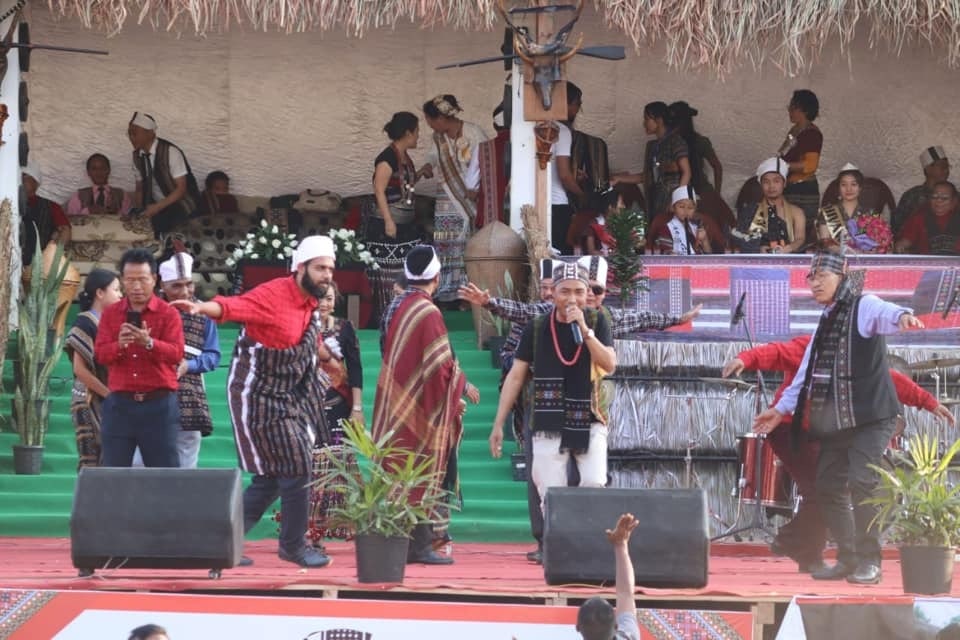
The festival is marked by popular dance forms such as Sawlakia, Khohcheino La, and Awkhy La, traditional folk songs and games. The Mara women wear traditional attire and participate in a costume parade.
Khuado Kut
Khuado Kut is a festival celebrated by the Paite community which symbolises thanksgiving to the Almighty for having blessed and given a bountiful harvest. The name Khuado Kut stems from the words ‘night time’ and ‘defend’, which means it is a festival to celebrate local villagers coming together to defend themselves and their harvest from the devil.
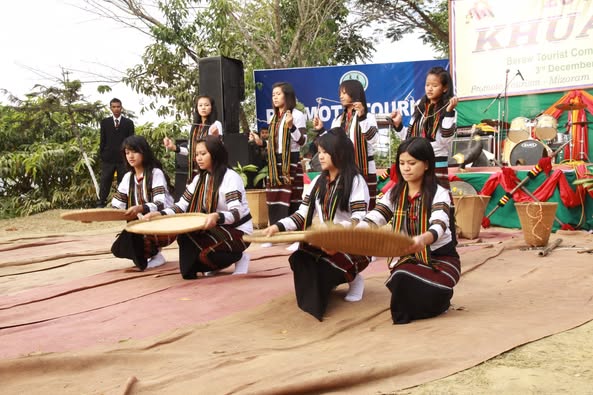
Organised by the village chief, every household of the tribe collects the bark of a pine tree to light and ward off evil spirits from their lands. The festival is marked by age-old traditions, local cuisine, dance and hymns.
Hlukhla Kut
The Hlukhla Kut is a festival of Mizoram’s Lai people which is celebrated during March after completion of their most arduous task of jhum operation which is clearing of the remnants of burning. The spring festival is celebrated with great fervour usually in the end of February or early March when the trees and bamboos felled for jhum are left to dry and the shifting cultivators get some time to relax and enjoy after the tedious task.

Thalfavang Kut
One of the major festivals of Mizoram, Thalfavang Kut also celebrates the harvest period after the weeding of the land. Before the festival, villagers prepare their fields for the forthcoming harvesting season. The festival is marked by exhibitions showcasing handmade crafts, handlooms, antique jewellery and local war weapons made by the skilled artisans of Mizoram. The festival is celebrated in November and is a major tourist attraction.





